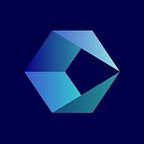Onward and Upward — How Cognizant Softvision Helped Me Achieve My Career Goals
My journey from developer to business analyst
By Arun Sakthinarayanan, Business Analyst, Cognizant Softvision
Introduction
Here at Cognizant Softvision, we help our customers create game-changing digital products that intersect engineering, design, and strategy. For a team member on the front lines of the project, this means exposure to different technologies, practices, and challenges faced by customers operating in various industries. This is precisely where my journey towards becoming a business analyst began: working in cross-functional roles and having a genuine interest in delivering robust software solutions to our clients.
Who Am I?
My name is Arun, and this is my journey. I started my career in 2011 as a .Net developer with Cognizant in India. I wanted to understand how large organizations worked and how these companies managed projects. So, two years later, I enrolled in a full-time MBA at Iowa State University. The benefits of getting an MBA are numerous — but the main ones that served me well over the years were the following: understanding organizational behavior and project management, increased curiosity to understand the big picture, and improved presentation and soft skills. After graduation, I was hired as a test automation engineer. I continued my journey to date in that role working for clients in the insurance, agriculture, telecommunication, utilities, and energy sectors. I have been working as a business systems analyst in my recent position, offering technical and production support for various applications getting migrated to the cloud.
What is Testing?
Testers validate the quality of software products to ensure it is secure, flawless and meets requirements. To function effectively in that role, testers must understand the scope of the requirements, how different modules and services interact with each other, and possess solid interpersonal skills to communicate clearly with stakeholders. Testing a single functionality often requires multiple iterations before it can be released. Therefore testers depend significantly on the processes defined by the project management methodology.
Common Challenges
Incomplete requirements make writing test cases hard. In the software development lifecycle, collecting requirements and testing a developed product falls on the opposite ends of the timeline; therefore, a tester needs to be proactive and ask intelligent questions upfront to understand the requirements. There might not be a dedicated business analyst in some projects, and the questions might be complicated to be relayed through the project manager to product owners. In such cases, the tester has to establish direct communication with product owners and client POC’s to clarify requirements.
In agile development, unlike the waterfall methodology, requirements are not defined up front. Changes in conditions might be introduced for functions that are already developed. It is challenging to go through the project backlog, trace the original ask, and compare it against the new changes to modify any associated test cases and automation test scripts.
Once a developed function has passed testing, it must be demonstrated to the clients before it can be released. A tester often performs this task explaining the edge cases. Products that display workflows, graphs, and other data visualization tools, require testers to mimic data similar to that of what that application might encounter in production.
My Transition
When we work on a long project in a role we are comfortable with, complacency creeps in. While some employers might not be concerned, the culture and the leadership in Cognizant Softvision’s studio in Vancouver have always encouraged us to take up new challenges. Every studio member was offered an annual budget to pursue professional certification, attend seminars and take coursework for skill development. I used this to get a Certification Scrum Master in 2019. In my first project with the company, I was allowed to backfill and handle all project activities when our project manager had to go on a leave of absence. Apart from testing, I enjoyed participating in whiteboarding sessions during the ideation phase, analyzing complex functions to organize into simple tasks, presenting product demos, and writing product documentation.
During my time with Cognizant Softvision, I demonstrated critical thinking, effective communication, and working effectively with a multi-disciplinary team to solve problems. In January 2020, I expressed a strong interest in transitioning to the product community team as a business analyst. Due to the onset of the pandemic, new opportunities were slow to come. Despite the challenges, our community leader, Melissa Crow, stayed in regular touch, collected regular updates on our projects, and organized quarterly workshops to develop our project management skills. She was instrumental in initiating dialogue between leaders from delivery, Jeff Aschkinasi, project management, Jeff Suever, and product strategy communities, Ryan Riley & Anjanette Houser. Due to their continued support and efforts, I was onboarded as a business analyst in April 2021 after a formal round of interview.
Cognizant Softvision believes our people are our most powerful force. Our leaders are entrusted to help make their team members become better versions of themselves every day and improve their skillset. With a culture like that, Cognizant Softvision offers opportunities for all of us to grow our careers in ways exciting and meaningful to us.
Get more insights from our engineering and design experts on our website!
